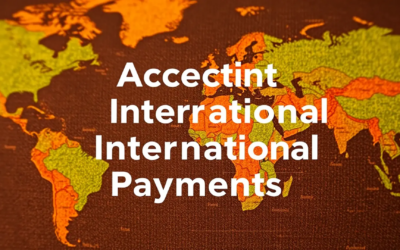Why is transparency in finance essential to building trust?
In today’s financial world, transparency has evolved beyond a popular term and has become a crucial foundation for building trust and ensuring accountability. As markets undergo constant evolution and stakeholders crave greater visibility into financial dealings, the significance of transparency in finance has become undeniable. Businesses, consumers, and governments understand that clear and honest communication regarding financial matters fosters trust and promotes responsible practices. This article explores the profound impact of transparency in finance, examining how it influences decision-making, safeguards consumers’ interests, and contributes to sustainable economic growth.
Introduction: Why transparency in finance matters
The demand for transparency in finance has grown exponentially in recent years. In an era where financial scandals and misconduct have shaken public confidence, transparency ensures that organisations operate ethically and are held accountable. Financial transparency reassures stakeholders and strengthens the overall financial system by promoting integrity and reducing the risk of fraud.
Defining transparency in finance
Transparency in finance involves clear, accurate, and accessible financial information available to all stakeholders. This includes everything from detailed financial reports and disclosures to the open communication of risks and uncertainties. Financial transparency relies on consistent reporting standards, clear disclosures, and accessible information that empowers stakeholders to comprehend and make informed decisions.
The role of transparency in financial accountability
Transparency is the bedrock of financial accountability. When financial activities are visible and understandable, organisations accountable for their actions become more accessible. Transparent financial practices ensure that all parties, from shareholders to regulators, have the necessary information to make informed decisions and intervene if necessary. This accountability helps to maintain ethical behaviour, fostering a culture where businesses prioritise long-term stability over short-term gains.
Transparency as a tool for consumer protection
One of the primary benefits of financial transparency is the protection it offers consumers. When financial institutions openly disclose the terms and conditions of their products, consumers are better equipped to make informed choices. Transparency reduces the risk of hidden fees, misleading terms, and other pitfalls that harm consumers. As a result, financial openness builds trust and empowers consumers to take control of their economic well-being.
Regulatory Frameworks Promoting Financial Transparency.
Governments. and international organisations have established various regulatory frameworks to enhance financial transparency. Regulations like the Sarbanes-Oxley Act in the United States and the EU’s Transparency Directive set strict financial reporting and disclosure standards. These frameworks compel businesses to maintain accurate records, conduct regular audits, and provide clear information to stakeholders. Such regulations are essential in fostering a financial environment where transparency is the norm rather than the exception.
How transparency builds trust in financial institutions
The cornerstone of any financial relationship is built on trust, and transparency is essential for fostering that trust. When transparent about their operations, performance, and challenges, financial institutions signal integrity and reliability. Stakeholders—investors, customers, or regulators—are more likely to engage with and support institutions that operate with openness. Trust derived from transparency not only enhances reputation but also drives long-term success.
The impact of transparency on financial decision-making
Financial transparency empowers better decision-making by giving stakeholders the information they need to evaluate risks and opportunities. Whether an investor decides where to allocate funds or a company determines its growth strategy, access to transparent financial data is crucial. In a transparent financial environment, decisions are based on accurate, unfiltered information, reducing the likelihood of errors and misjudgments.
Transparency in digital finance: Challenges and opportunities
The rise of digital finance presents both challenges and opportunities for financial transparency. On one hand, digital platforms make it easier to access and share financial information quickly and efficiently. Conversely, the intricacy of digital financial products and services may need to be improved to maintain transparency. To guarantee the transparency of digital finance, it’s crucial to establish clear regulations, design user-friendly platforms, and provide continuous education for consumers and service providers.
Financial transparency in public and governmental sectors
Financial transparency is critical in the public sector for maintaining public trust and ensuring that government resources are managed responsibly. Transparent government finances allow citizens to see how tax dollars are spent, hold officials accountable, and participate in decision-making. In many countries, transparency initiatives in government finance have led to more efficient use of public funds and reduced corruption.
The intersection of transparency and financial sustainability
Sustainable financial practices are closely linked to transparency. Organisations that commit to transparent financial operations are more likely to prioritise long-term stability over short-term profits. Transparent financial reporting highlights areas where resources are used inefficiently and where improvements can be made. This focus on sustainability benefits the organisation and contributes to broader economic stability.
Implementing transparency in corporate finance
Corporate finance is one area where transparency must be deeply embedded into the culture. Implementing transparency involves clear financial reporting, open stakeholder communication, and a commitment to ethical practices. Companies that prioritise transparency in their financial dealings are better positioned to attract investment, build strong relationships with partners, and navigate regulatory challenges.
Transparency in blended finance: Unlocking new potential
The success of blended finance, a combination of public and private funds directed toward projects with social or environmental benefits, hinges on transparency. Transparency in blended finance ensures that all stakeholders are aware of the investment’s risks, returns, and objectives. It also promotes collaboration, as clear communication builds trust among diverse investors, paving the way for innovative solutions and impact-driven projects.
The role of technology in enhancing financial transparency
Technology is a powerful enabler of financial transparency. From blockchain’s immutable ledgers to AI-powered analytics, digital tools make tracking and verifying financial transactions more accessible. Fintech solutions offer businesses real-time insights, automate reporting, and reduce the risk of errors. Technological advancements will increasingly shape transparent financial practices, presenting novel avenues for heightened visibility and accountability.
Case studies: Successful transparency initiatives in finance
Several organisations have set benchmarks in financial transparency, demonstrating the tangible benefits of open financial practices. For instance, companies that have adopted integrated reporting—a framework that combines economic and non-financial data—have seen improvements in investor confidence and stakeholder engagement. These case studies highlight transparency’s competitive advantage in today’s market.
Overcoming barriers to financial transparency
While the benefits of financial transparency are clear, implementing it can be challenging. Common barriers include resistance to change, fear of exposing vulnerabilities, and the complexity of regulatory requirements. Overcoming these obstacles requires a commitment to cultural change, investment in training, and adopting tools that simplify compliance and reporting. Transparency must be viewed not as a burden but as a strategic asset.
Transparency in financial reporting and disclosures
Accurate and transparent financial reporting is at the heart of ethical financial practices. Clear disclosures give stakeholders the information they need to assess a company’s performance and make informed decisions. Transparency in reporting also reduces the risk of fraud and financial misstatements, fostering a culture of honesty and integrity. For businesses, transparent reporting is not just a regulatory requirement; it’s a key component of maintaining credibility and trust.
The future of transparency in finance
The future of finance is undoubtedly more transparent. As stakeholder demands for openness grow and technology enables greater visibility, transparency will become a standard expectation in financial practices. Trends like integrated reporting, ESG (environmental, social, and governance) considerations, and real-time data sharing are set to redefine transparency in finance. Organisations adopting these new trends will be better positioned to adapt to future challenges and take advantage of new opportunities.
How financial transparency aligns with ethical practices
Ethical financial practices and transparency are intertwined concepts. Organisations dedicated to ethical conduct recognise that transparency is crucial to establish trust and ensure accountability. By aligning financial practices with ethical standards, companies comply with regulations and reinforce their brand reputation. Transparent finance is a key pillar in creating a culture of honesty, integrity, and social responsibility.
Global perspectives on transparency in finance
Different regions approach financial transparency uniquely, shaped by cultural norms, regulatory environments, and economic conditions. While some countries lead the way with strict transparency standards, others face challenges due to weaker regulatory frameworks or a lack of enforcement. By examining global practices, businesses can adopt international best practices and enhance transparency.
Practical steps to improve financial transparency
Improving financial transparency requires a proactive approach. Organisations can start by conducting transparency audits, revising reporting practices, and engaging stakeholders in financial discussions. Adopting standardised reporting frameworks, investing in technology, and training staff on best practices for transparency are essential to building a transparent financial culture. The goal is to create an environment where information flows freely and accurately, enabling better decision-making and fostering trust.
Monitoring and evaluating financial transparency efforts
To ensure transparency initiatives are effective, organisations must regularly monitor and evaluate their efforts. Key metrics such as reporting accuracy, stakeholder engagement, and compliance rates provide insights into how well transparency goals are being met. Continuous evaluation allows organisations to identify areas for improvement, adjust strategies, and maintain a high standard of transparency in their financial operations.
FAQs
What is transparency in finance?
Transparency in finance refers to the clear, accurate, and accessible presentation of financial information, which ensures that stakeholders can easily understand and trust an organisation’s financial activities.
How does financial transparency benefit consumers?
Financial transparency protects consumers by providing clear information about financial products, reducing the risk of hidden fees or misleading terms, and empowering them to make informed decisions.
What are the challenges of implementing financial transparency?
Obstacles include reluctance to change, intricate regulatory requirements, and potential vulnerabilities. Overcoming these barriers requires cultural shifts, training, and investment in compliance tools.
How can technology enhance financial transparency?
Technology such as blockchain, AI-powered analytics, and fintech platforms provide real-time insights, automate reporting, and reduce the risk of errors, making financial transactions more transparent and traceable.
Why is transparency important in financial reporting?
Transparent financial reporting ensures that stakeholders have reliable information to assess performance, reduces the risk of fraud, and fosters trust in the organisation’s financial integrity.







